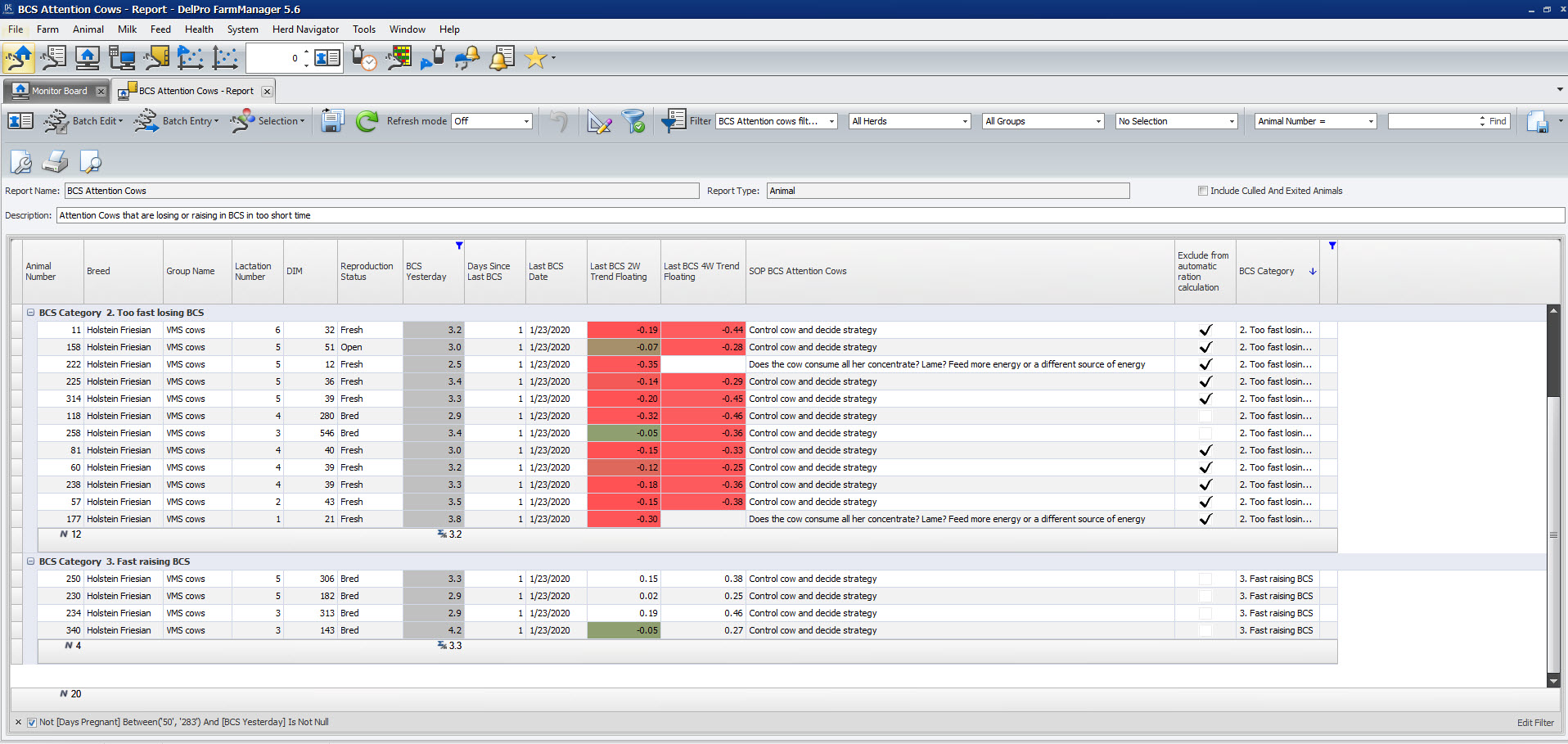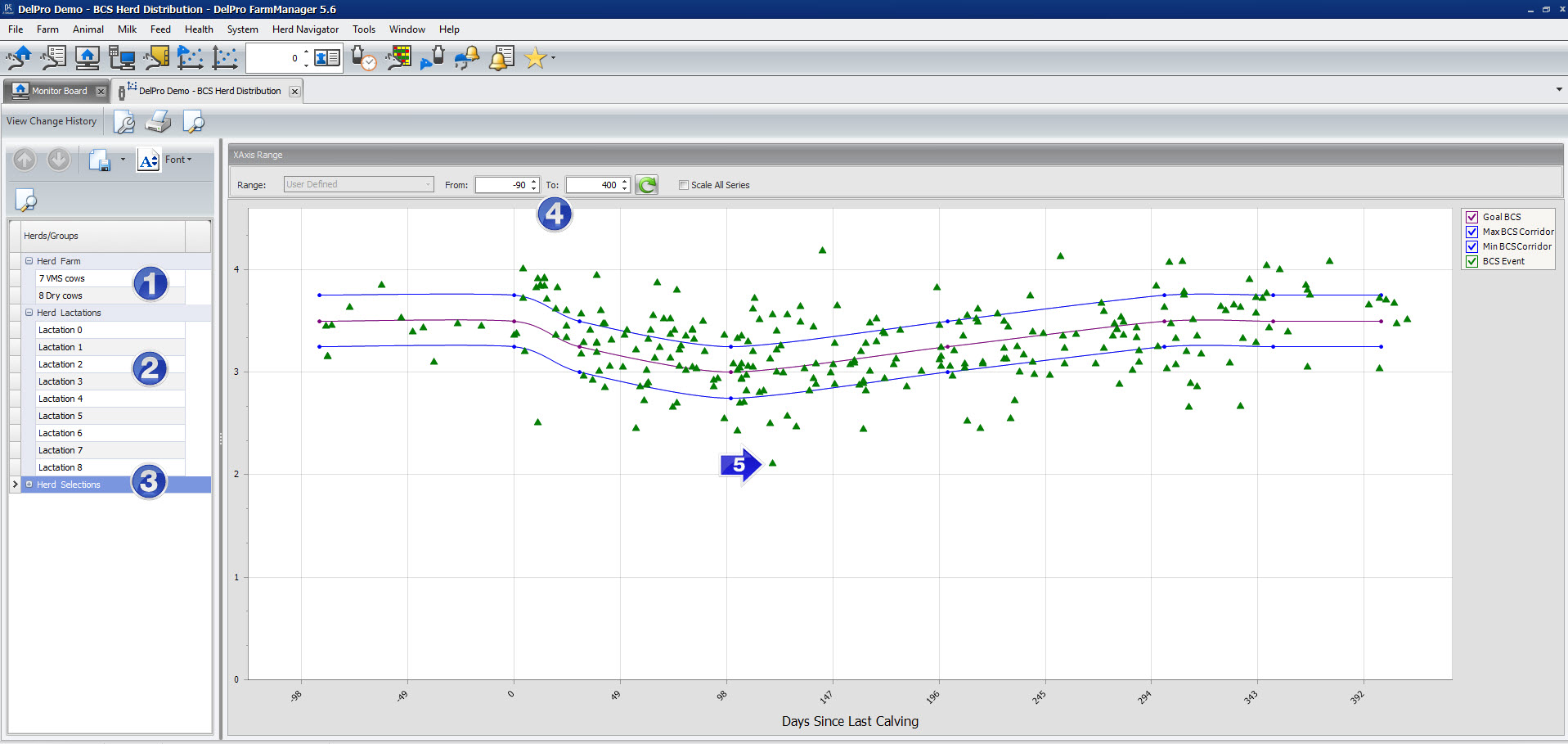Feeding management based on BCS data
Using BCS to make the right feeding decisions.
Starting with a well balanced ration containing enough roughage BCS should be used to adjust concentrate ration according to a cows need. During the transition period there is an opportunity to identify cows in DelPro that lose BCS too quickly, or gain BCS. The feed tables in DelPro make sure that concentrate is gradually stepped up as appetite and demand from increasing milk production grows. For more information about DelPro feed tables, take a look here: https://www.delaval.com/en-gb/learn/inspired-by-delpro/feeding/implementing-your-feeding-strategy-in-delpro-farmmanager/
What to do with cows that lose BCS
Increase the amount of concentrate for cows that need it. This can be a manual adjustment per cow, or by creating a specific group and feed table especially for these cows. If the time during milking isn’t enough to get the intake needed then make use of different feed types distributed by concentrate feeders installed in the barn. It is possible to give the cows the time to get the calculated intake.
What to do with cows with high BCS
Managing high BCS cows is more challenging, because they normally have lower feed intake. You’ll want to put them on a “diet” early enough in lactation (before 90 days in milk), by reducing concentrates to stimulate higher roughage intake. This is crucial for them to actually “milk off” the excess condition and not just reduce the amount of milk when we reduce the concentrate.
The earlier in the lactation you tighten the concentrate, the better they compensate for energy loss. The further in the lactation they get, the ability to compensate will decrease and reducing concentrates is more likely to limit milk production if you are too late to step down in concentrates.
How does DelPro FarmManager support managing BCS
Breed specific trend line
Each cow breed has a breed-specific condition model. Several breeds are available in DelPro FarmManager for selection so even in herd that is mostly Holstein, a Jersey or Fleckvieh are correctly based on the characteristics of their breed. So it’s a good idea to check the breed of each cow on the animal card when getting started.
DelPro BCS attention list
It is important to keep an eye on the attention lists of the cows themselves. DelPro generates a report with the deviations and gives the action needed. Do you want to change the concentrate ration? Move her to a new feed group? Cows appear on the attention list if they are gain or lose BCS within a short period of time.

BCS Herd Distribution Graph
The BCS herd distribution shows all the latest BCS values of individual cows. In the graph you see the animals plotted to days in lactation (horizontal) and the BCS value (vertical). The purple line indicates the target value during lactation. Around it the acceptable range set in the breed model is shown in blue.
In the example below, on the right side of the screen we can choose between the different groups within the herd (1), the different groups (2), or selections (3). We can also set the days we want to see in the graph (4).
When we click on an individual cow (5) the graph of the individual cow will appear.

Picture : DelPro Farm Manager BCS Distribution graph, giving options to select the herd, groups or selections of cows.
TMR Feeding
For farms feeding a TMR ration, a DeLaval Body Condition System BCS is less suitable for individual animal monitoring, but all the more for monitoring at herd or group level. As it is usually a rich ration for the whole herd or group without adjustment through concentrates, it is difficult to adjust individual cows. Animal attentions are used to determines whether adjustments necessary. Adjustments can be made on the basis of adjusting the TMR ration of a group, or when working with production groups, the BCS score can be leading for the choice of switching between groups. Separating cows into an attention group may also provide an opportunity for individual steering.
You can read more about how DelPro FarmManager works DeLaval Body condition score System BCS by clicking here